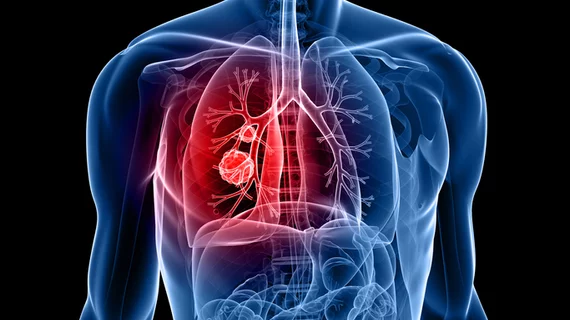Overaggressive lung nodule evaluation saddling patients with excess costs, radiation exposure
Overaggressive evaluation of incidentally detected lung nodules may be saddling patients with excess costs and unnecessary radiation exposure, according to a study published Tuesday in JAMA Internal Medicine.
Each year, U.S. providers spot small masses in roughly 1.6 million individuals, with only about 5%-10% actually ending up with lung cancer, noted experts with several West Coast institutions. Guidelines recommend varying types of responses in these situations aligned with a patients’ risk for the disease and nodule size, and yet adherence rates for these recommendations can run as low as 39%.
Wanting to better understand the ramifications for such evaluations, Farhood Farjah, MD, MPH, and colleagues conducted a comparative-effectiveness research study incorporating more than 5,000 patients. They found that higher-intensity diagnostic evaluation resulted in greater radiation exposure, more procedure-related adverse events and higher health costs.
“Findings from this study underscore the need to increase the level of evidence that supports current guideline recommendations and to decrease unnecessarily intensive diagnostic evaluations of lung nodules,” Farjah, with the Department of Surgery at the University of Washington in Seattle, and co-authors wrote Jan. 19.
To reach their conclusions, scientists analyzed data from health plan enrollees treated at Kaiser Permanente Washington, along with the Marshfield Clinic in Wisconsin. Those included had an incidental lung nodule detected on CT sometime between 2005 and 2015, were 35 years or older at the time, and had no evidence of advanced cancer. Utilizing 2005 Fleischner Society guidelines, Farjah et al. separated cases into three categories. Those included (1) a more-intensive response, with further testing when guidelines did not recommend doing so, shorter-than recommended surveillance intervals, or more invasive evaluation than suggested; (2) a less-intensive evaluation, with the opposite of the previous category; or (3) guideline-concordant treatment that stuck to the society’s advice.
All told, out of 5,057 subjects, 38% received recommended treatment, 37% the less intensive course, and 25% were subjected to more aggressive diagnostic evaluation. Compared with guidelines-concordant care, those in the latter category were associated with about 8.1% more procedure-related adverse events, higher radiation exposure (+6.8 milliSieverts), and a whopping $20,132 in higher mean health expenditures. At the same time, there was no difference in stage 3 or 4 disease diagnoses. On the other side, the less-intense treatment group saw fewer adverse events (-5.9%), lower radiation exposure (-9.5 mSv), lower average health expenditures (-$10,916), and no difference in later-stage diagnoses.
“This study also underscored the need for more evidence on better ways to evaluate lung nodules, and its findings will have implications for future investigations and quality improvement efforts,” Farjah and co-authors noted in the study’s discussion section. “In addition, we believe that the magnitude of harm associated with more intensive nodule evaluations demonstrated in this study will motivate and justify quality improvement initiatives that curb unnecessarily intensive diagnostic evaluations.”
You can read much more about their results in JAMA Internal Medicine here.

